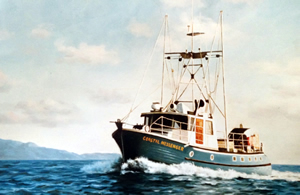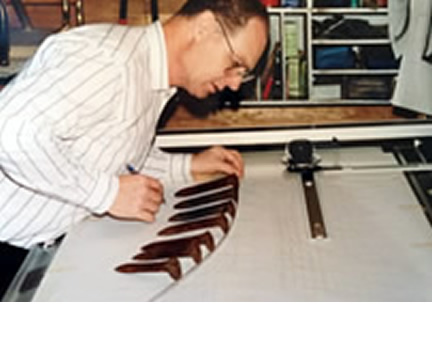Coastal Missions Society
Chapter One
Ron and Joan Mckee initiated year-round programming at SCA-owned Camp Ross, located at Pachena Bay on the west coast of Vancouver Island in 1973. Until then, it had been a summer camp. The place gradually became known simply as Pachena.
Summer programs continued, but then other month happenings were introduced: week-long Bible training sessions, the hosting of high school, college, university groups, and ministry to hikers.
This was a time in history when the West Coast Trail became widely known and especially popular. The three-acre front lawn of the camp was also the northern terminus of the trail. An information center was built to give tips and directions to hikers just starting out, and a clinic was erected to serve the many scrapes, cuts, and blisters of those completing it.
Individuals came to Pachena for different reasons; a hiker for injuries, a cool drink of refreshing spring water, and free goodies. Others came for training or a planned program or event. Many lives were changed forever by God's saving grace.
Some came as a volunteer for a time. Of those, some went on and became active in Christian work at home or abroad. Meanwhile, a core of volunteers remained as part of a developing missionary team.
All was beautifully coordinated by Joan McKee (nicknamed Petunia after singing the children's song, I'm a Lonely Little Petunia in an Onion Patch). The name stuck. Ron mainly kept things going behind the scene.
 Roy Getman, better known as Uncle Roy, lived in Nanaimo and drove the one-hundred-plus miles (about 60 of those on logging roads) to Pachena Bay each month to lead Bible, navigation, and seamanship instruction. Two twenty-foot-long surf boats of Uncle Roy's creation were used to teach boat handling—launching, rowing and beaching.
Roy Getman, better known as Uncle Roy, lived in Nanaimo and drove the one-hundred-plus miles (about 60 of those on logging roads) to Pachena Bay each month to lead Bible, navigation, and seamanship instruction. Two twenty-foot-long surf boats of Uncle Roy's creation were used to teach boat handling—launching, rowing and beaching.
In time, using these small crafts evolved into "dory camps" led by those who had gone through the training.
George Loewen, an SCA missionary from northern British Columbia and former pastor, joined in leadership and Bible teaching at Pachena in 1975. He soon became known as Uncle George.
Ron and Petunia were a caring couple. Their kindnesses spread to those in training. That quality, in turn, overflowed in every way and to families in the nearby fishing village of Bamfield.
Local fisherman Brian Burkholder became involved and skippered his own fifty-six-foot-long commercial fish boat, Kolberg,during off-season months. Five significant missionary voyages were made between 1976 and 1978—reaching out to many parts of the British Columbia coast, southeastern Alaska, and the Queen Charlotte Islands (now Haida Gwaii).
Of those in training, Gloria Troll and Debbie Forney (now Debbie Maxie) were posted at Sandspit on Moresby Island, Haida Gwaii, in 1978. Theirs became a most fruitful work that, in time, was given over to the Canadian Sunday School Mission.
By late 1979, the need to form a full-scale coastal missionary organization was evident. The incorporation process was begun that December. A letter explaining what was happening went out by post to those interested.
Although no mention of needs was made, the response was overwhelming. Letters and encouragements and gifts of money came pouring in. A hurried office was set up, and Anne Spencer (now Anne Burkholder), who had earlier been in banking before missionary training, began keeping precise records.
One man prompted by the importance  of using a proper mission vessel, gave a sizable donation to make it possible.
of using a proper mission vessel, gave a sizable donation to make it possible.
While Society application paperwork continued, the former 48-foot-long government vessel, D. M. MacKay, was purchased in February 1980 and re-registered as Coastal Messenger. By then, those who had called Pachena "home" had moved to Chemainus on the east side of Vancouver Island. Readying the little ship took place at nearby Ladysmith Harbour.
Roy and Rachel purchased a home on Hillside Road in Chemainus. A large portion of the lower level of the house became the mission's office.
On May 7, 1980, Coastal Missions Society became a reality starting with eight full-time workers—Uncle George, Brian, Uncle Roy, Ron, Petunia, Anne, Debbie, and Gloria.
Tom Maxie, who had a taste of Pachena in 1977, returned in 1981 and has served as a regular ever since.
These were exceptionally diverse persons, all with a heart for the coast. All were hands-on Bible-believing Christians with lifetime commitments. But don't forget the word "diverse." These were not a collection of look-alikes but a group of very different individuals who, when working together, became a colourful and amazingly skilled team.
That diverse team spirit carried on and became the core, the character and life force of Coastal Missions.
As for money and needs, nothing was said. All believed the Lord would supply. That, too, became a hallmark. As word of the new mission organization spread, the number of people wanting to support it grew.
On June 1, 1980, after its momentous and colourful commissioning service in Victoria's Inner Harbour, Coastal Messenger set out on its first circuit, including places on the British Columbia coast, southeastern Alaska, Haida Gwaii, outer Coast of Vancouver Island, and south into Washington as far as Tacoma.
Brian and Uncle Roy, both with extensive boating and coast-wise experience, alternated as skippers using two crews.
Land teams were also sent out that year, visiting as far south as Charleston, Oregon. This mainly had to do with acquaintances formed during active Pachena years.
With Coastal Missions, voyages were prayerfully planned over the next thirteen years with carefully coordinated crew changes. Those, when not on the vessel, were busy with happenings at the homefront, often with the help of volunteers—gardening, food preparations, and tending a busy office. Activities also included speaking and other engagements, hospital visits, and more.
Coastal Messenger was a notably seaworthy craft—no question regarding its safety. But it was round-bottomed, and therefore rolly. A tripod mast and typical west coast rigging were added in 1983. Poles on both sides, when spread out, and delta-wing-like stabilizers deployed, reduced rolling as much as, perhaps, 70%.

That same year, a lightkeeper took a perfect photo that was used for a postcard. Thousands were given away
The mission vessel's circuit was expanded in 1984 to include places on the outer coast of Prince of Wales Island, Alaska.
In mission work, there are seemingly endless stories of lives touched or changed. One account had an unusual twist. Uncle Roy and crew made an unscheduled side trip to a remote natural hot spring due to excruciating pain in his shoulder. While there, they met several fellows on a sportfishing outing whom Gloria Troll invited for supper. Months later, one of them wrote to say that the prayer offered at mealtime profoundly influenced him. As a result, he accepted Christ as his Saviour.
In 1985, sizable waterfront property with a fixer-up house handy to the mission Office was purchased to serve as a mission Base.
Coastal Messenger was twenty-seven years old in 1986 when directors, looking ahead, approved a ten-year plan to build a new replacement vessel. A large donation, designated for that very purpose, was received three years later. It came as a surprise since no mention of the plan to build a new vessel had been openly discussed.
Uncle George retired in 1988 and returned to his roots, where he died in 2016.
Shop construction began on the Base property in February 1992. It was completed the following year.
 And in 1992, after much design engineering, Uncle Roy began producing detailed drawings for building the new mission boat.
And in 1992, after much design engineering, Uncle Roy began producing detailed drawings for building the new mission boat.
1993, a couple living on Morseby Island, Haida Gwaii, sent a tithe from a big lottery win. Coastal Missions then purchased a new 15-passenger van to replace the old, very used one.
And 1993 was the same year that the wooden Coastal Messenger completed its last big circuit.
It was painted jade green, returned to its original name, and sold in August 1994. The words "Coastal Messenger" were retained for the new steel vessel soon to be built.
Two Christian men, Bob Friesen and Arnold Neufeldt, owners of Joshua Enterprises in Calgary, expressed a desire to help with the fabrication of the new mission vessel's aluminum pilothouse. So in October 1994, Brian Burkholder and Vic Hookins went to assist the work. The bare pilothouse fabrication arrived by flatbed truck at the Coastal Missions' shop in December.
Steel hull construction began at the Jenkins boatyard in Victoria in January 1995. In time, steel bulkheads, hatches, and portlights were installed. Meanwhile, much of the work—interior joinery, engine, and hydraulic equipment preparation happened in the Coastal Missions shop.
Jim Fullerton, a retired pattern maker, made the ship's (steering) wheel in his own workshop in Duncan.
When ready, the fully completed pilothouse was transported to Victoria and joined to the hull.
By 1997, the new ship's insulation, panelling, and furnishings were in place, and interior spaces were bright and beautifully painted. Coastal Missions held two Open Boat receptions right where the vessel sat straight and level on blocks at the boatyard.
This was the year that Rachel Getman retired from teaching secretarial courses in Nanaimo after twenty-five years. She promptly plunged into all that was happening at Coastal Missions and its work in the office.
Many from the Coast came from great distances to visit. They knew we were building a new Coastal Messenger and understood how important that was. It wasn't just visitors from our coast—we had ones from as far away as England, Holland, and Japan. One family came by sailboat from California.
By mid-summer 1998, the new vessel was nearly complete, yet the work had to stop because of a shortage of money. Then, a significant donation came in August—enough to finish and launch the ship on September 10. The survey for ship's insurance noted "no deficiencies." Such a thing is almost unheard of in marine surveys.